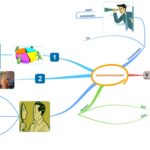As a structured system of communication, humans use spoken, written or maybe other kinds of languages. In this context, in our world there are many languages and normally everyone uses at least one of them, most likely his or her native language.
Interaction with the environment via various ways is possibly the most important thing in someone’s learning his or her native language through his or her lifetime. Even if it has its own difficulties, normally and naturally this is somehow a slow, but permanent way of learning a language. However, when it comes to interact with a foreign language enviroment for any reason, especially during his or her adulthood, someone needs to learn that foreign language as well which requires extra efforts in the learning process.
The effort reqired in learning a foreign language depends on various things like the person him or herself, his or her level of interest/passion to that foreign language and his or her living environment. Moreover, activities like basically subjecting themselves to foreign language environments also affects the effort required in learning a foreign language. These environments, in that foreign language, can be a conversation, a music or a book etc. The more someone subjects him or herself to that foreing language, the better and the faster he or she adapts him or herself to that language and learns it. This way someone can improve his or her grammar and vocabulary in that foreign language. Especially reading articles, books and dictionaries much improves the vocabulary. Of course, it is natural that for people, like in any learning activities, the abilities and methods of learning varies. From the next title on, in the article it is aimed to show an alternative way of learning foreign language words using mind maps.
Vocabulary Journey via Mind Maps
Creating mind maps is like to paint the relations among the things. This does not change when the things are the words of a language. Rather, this makes the painting more interesting and fun. This is because a language is alive. That is, if it is fed, it lives but if it is fed in an attractive way, it lives strong and long. Mind maps at this point provide this attractiveness in someone’s foreign language learning process. And then the learning journey starts in which lots of destinations exist.
Like a central idea in any mind map, the central foreign language word of the following sample mind map is selected as the compound German word “zusammensetzen“. Normally, there is no special reason choosing this word related to it’s usage importance. However, since it is a compound word it somehow includes some more words or word parts than any other words.
When constracting the mind map above, the German to German dictionary, “Duden – Deutsches Universalwörterbuch“, has been used as a resource. In the mind map the central idea is the word itself in that foreign language and normally there may exist lots of branches related to the central foreign language word. Simply a group of branches shows the type of the central foreign language word and its technical properties. Also another group of branches shows the components of the central foreign language word as words and word parts. The rest of the branches, mostly shown with the numbers, visualize the meanings of the central foreign language word.
First, “zusammensetzen” is a weak verb of which the helping verb is “haben“.
Second, “zusammensetzen” basically has two components which are “zusammen” and “setzen“. As can be seen on the mind map, these two also has their own components: “Set” and “Zen” for “setzen” and “zu” and “sammen” for “zusammen”. Similarly, “sam” and “sammeln” too can also be thought as components that can be directly or indirectly reached from “sammen” or associated with “sammen“. For further study, components and their individual mind maps can be accessed using their own links on them.
Third, the selected meanings of “zusammensetzen” have been visualized with a picture on the mind map and also text usages have been mimized. Of course this process may seem to have subjectivities related to foreign language learner, but after all this process is about his or her connections and learning. So, it is possible for others to make different associations or visualizations on the mind map.
The first meaning (1) of “zusammensetzen” has the same meaning with the first meaning of “zusammanfügen“, which is another compound word as well. That is it means to connect parts with each other. As an example to this meaning, “put pieces together to form a puzzle.” can be stated. The second meaning (2) of “zusammensetzen” is to manufacture by joining or make functional. “To assemble a disassembled product” can be stated as an example to this meaning. The rest of the meanings of “zusammensetzen” are related to “sich” usage. The third meaning (3) of “zusammensetzen (+ sich)”, as a whole, is to consist of different members, etc. As an example to this meaning, “the team consists of five employees” can be stated. The fourth meaning (4) of “zusammensetzen (+ sich)” is to meet in a common place. “To sit down in a place and have a cup of coffee” can be stated as an example to this meaning. The fifth and the last meaning (5) of “zusammensetzen (+ sich)” is to meet or come together especially to discuss something together. As an example to this meaning, “to meet for tender negotiations” can be stated.
As stated earlier, learning journey with mind maps has lots of destinations. Someone aims a few words to learn but gains many more. It may seem time consuming but it has also some fun in it and is more something like dabbling in the foreign language to make someone expose to that foreign language. The more someone dabbling in the language the more he or she get to know it and learning occurs. So, stick with the mind map, reach for the foreign language!

